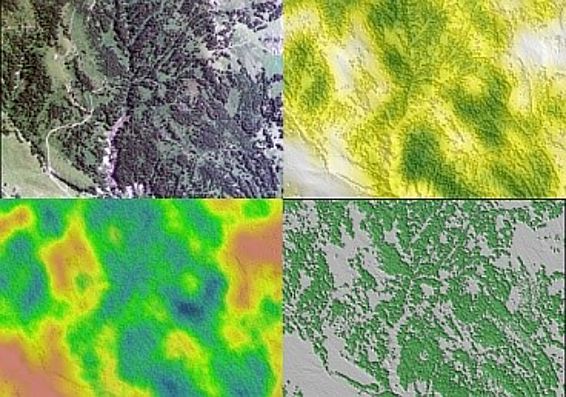
The Remote Sensing Group of WSL established a lecture series on current topics in the field of remote sensing, which has met with a very positive response in science and practice. Lecturers give insights into current projects at WSL, complemented by internationally renowned scientists. The lectures are hold as a webinar in a yearly interval. Besides latest developments in remote sensing techniques and sensors, special focus is laid on their usability and relevance for practice. In each lecture at least one presentation is given about the latest (freely available) application tools for the current topic.
The webinar strengthens the network and collaboration between the remote sensing group at WSL and other institutions in Switzerland and abroad. If provided by the presenters, the presentations can be downloaded from the website.
Next lecture: Tree species classification ¶
Early 2024, program to be announced
Topics of previous lectures incorporated ¶
Responsibility and contact ¶
Don’t want to miss upcoming remote sensing lectures?
-> Send an e-mail to lars.waser(at)wsl.ch to be added to the list and receive the zoom-link.
Point clouds for forest applications (10 May 2023) ¶
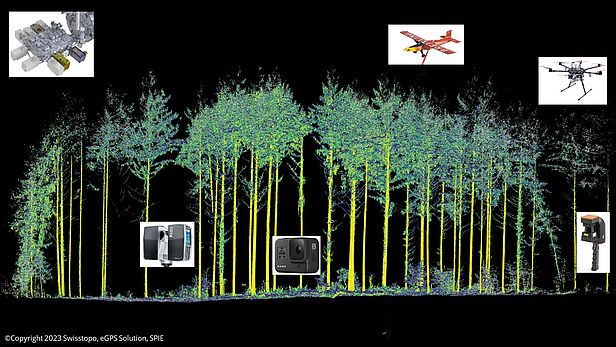
The advent of LiDAR enabled the acquisition of 3D point clouds in forests and a detailed 3D analysis of forest parameters at different scales. In this webinar we will have five in-house and five external presentations from renowned institutes. Besides state-of-the-art applications in forests, new methods, techniques, and processing of 3D point clouds from ALS, TLS, MLS, and close-range photogrammetry will be given.
Program ¶
Presentations for download ¶
-
4D point clouds – towards physically-based monitoring across scales 62 MB
Felix Morsdorf, University of Zurich, Remote Sensing Laboratories
-
Deep learning for dense LiDAR data in forestry applications 10 MB
Stefano Puliti, Norwegian Institute of Bioeconomy Research NIBIO
-
Countrywide characterization of forest edge structure from airborne laser scanning data 3 MB
Moritz Bruggisser, Remote sensing group, WSL
-
The potential of GEDI to characterize mountain forest structure across scales 4 MB
Lisa Mandl, Technical University Munich
-
Spherical Stereo Videogrammetry for Point Cloud Generation in Forest Environment 14 MB
Hristina Hristova, Scientific Service NFI, WSL
-
Digital twins for understanding forest disturbances and recovery from space 44 MB
Kim Calders, Ghent University
-
How robust is mobile laser scanning for forest inventory applications – a Swiss case study 16 MB
Daniel Kükenbrink, Remote sensing group, WSL
-
TLS point clouds for individual tree volume estimation 1 MB
Aline Bornand, Scientific Service NFI, WSL
Remote sensing of forest disturbances (11 May 2022) ¶

Forest disturbances are manifold and ubiquitous. In this webinar we will have four in-house and four external presentations from renowned institutes covering a broad range of forest disturbances such as windthrows, droughts, pathogens, insects and fires using cutting-edge remote sensing techniques. Besides latest research outcomes at different spatial and temporal scales, deeper insight into GEE for mapping disturbances will be given.
Program ¶
Presentations for download ¶
-
Large-scale early-wilting response of Central European forests to the 2018 extreme drought 5 MB
Philipp Brun, Dynamic macroecology group, WSL
-
The drought of 2018 and its effects on bark beetle outbreaks in Swiss forests 8 MB
Achilleas Psomas, Remote sensing group, WSL
-
Storm damages "Vaia" using multi-remote sensing data 3 MB
Francesca Giannetti, University of Florence
-
Rapid Sentinel-1-based detection of windthrows - first results of the FNEWs project 4 MB
Marius Rüetschi, Remote sensing group, WSL
-
From pixels to events: identifying storms and fires from satellite-based disturbance maps 18 MB
Cornelius Senf, TUM, Freising
Potential of multispectral Sentinel-2 images for land monitoring (2 June 2021) ¶
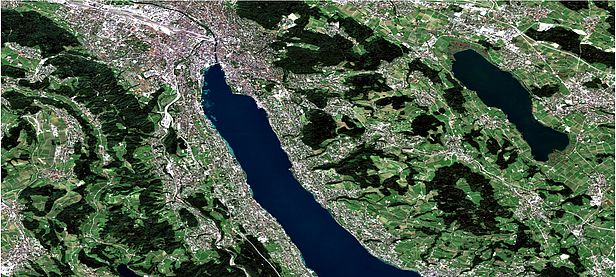
Nowadays, Sentinel-2 images are frequently used in all kind of environmental fields, e.g. for applications in forests, urban areas, grasslands and land-use intensity using cutting-edge remote sensing techniques. We will also gain deeper insight into the FORCE software to derive Sentinel-2 data.
Program ¶
Light regimes in forests (18 November 2020) ¶
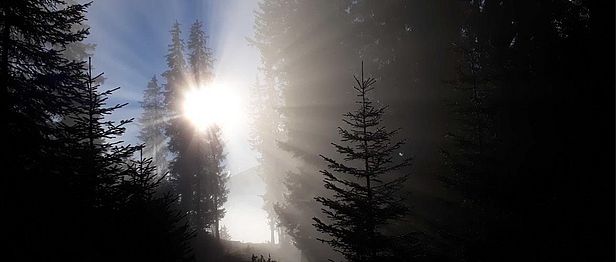
A webinar covering the full range of new and traditional remote sensing techniques to measure forest structure, innovative methods and models to predict light availability within forests, and exciting applications of light regime data in forest ecology and hydrology.
Program ¶
Application of unmanned aerial systems (15 November 2018) ¶
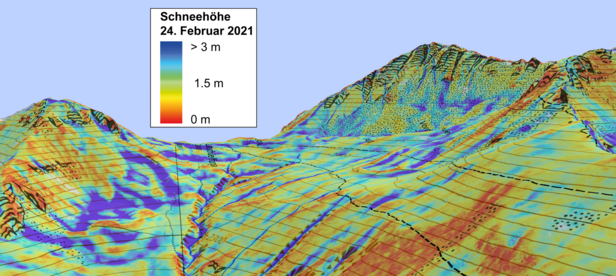
Five WSL/SLF presenters demonstrated how UAS are applied for a wide range of applications from ecology over management of natural hazards to snow hydrology. We also invited five external presenters who showed us their UAS applications.


